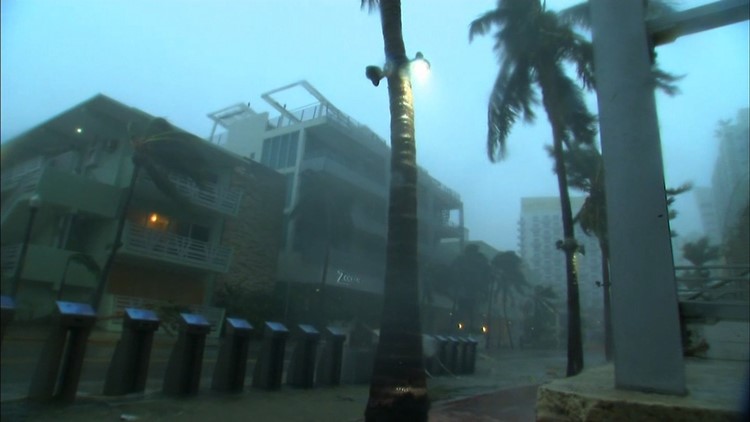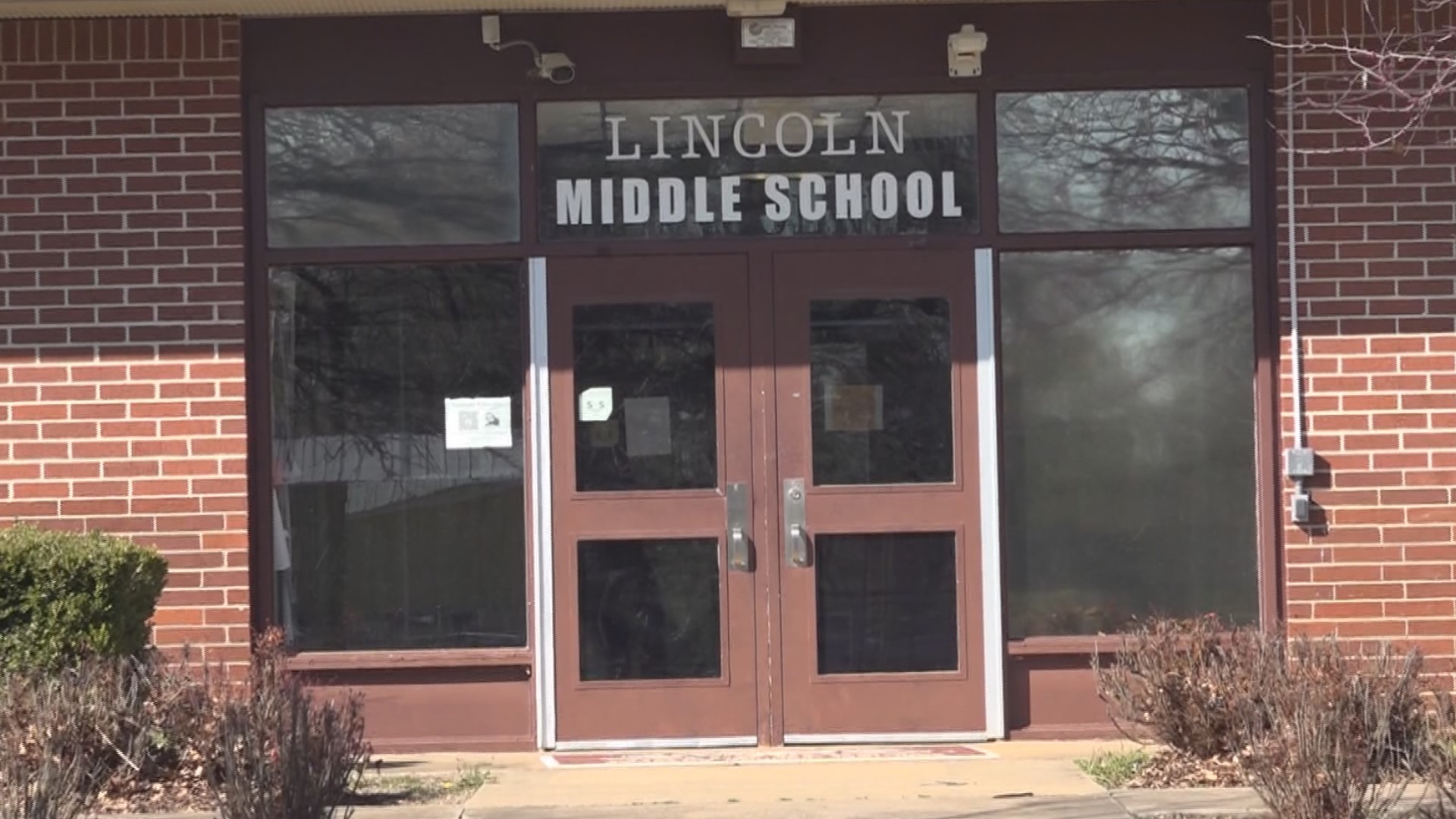ATLANTA (CNN) Hurricane Irma made landfall in Marco Island, Florida, as a Category 3 hurricane with winds of 120 mph at 3:35 p.m. ET Sunday (Sept. 10), the National Hurricane Center said. This is the storm’s second landfall in Florida. It hit Cudjoe Key at 9:10 a.m. as a Category 4 storm.
Hurricane Irma bludgeoned Florida on Sunday, uprooting trees and turning Miami streets into rivers.
And there’s plenty more to come.
Naples and Marco Island will endure some of the strongest winds in the next few hours, the National Hurricane Center said.
Irma, now a Category 3 hurricane, is bringing 120 mph winds as it hugs the southwest Florida coast.
A personal weather station at the Marco Island Police Department reported a wind gust of 130 mph, the National Weather Service said.
Police Chief Al Schettino said the worst part of the storm was hitting his city. Without power, emergency officials are using a backup radio system to communicate, he said.
“We’re all hanging in there,” he said, “ready to get out there to help others as soon as its safe to do so.”
Even areas that aren’t facing a direct hit from Irma are already seeing flooding and downed power lines.
“We’re getting slammed right now,” Josh Levy, the mayor of Hollywood, Florida, told CNN on Sunday afternoon.
Expected to b even more dangerous than the powerful winds are the storm surges that threaten Florida’s coastal cities.
“The threat of catastrophic storm surge flooding is highest along the southwest coast of Florida, where 10 to 15 feet of inundation above ground level is expected,” the hurricane center said. “This is a life-threatening situation.”
Still, not everyone heeded orders to evacuate coastal Florida.
Wayne Ploghoft is hunkered down on the third floor of a building on Marco Island — where life-threatening storm surges are imminent.
Ploghoft said he wasn’t able to evacuate because his flight plans didn’t work out. Now Ploghoft and three others are holed up with stockpiles of water, canned food and battery power.
“We’re all going to be OK,” Ploghoft said.
Gov. Rick Scott said Irma’s wrath is unprecedented.
“We have never had anything like this before,” he told CNN Sunday.
In Florida and southern Georgia, more than 8 million people face hurricane-force winds topping 74 mph, said Ryan Maue of WeatherBell Analytics.
And almost the entire state of Florida is under a hurricane warning, affecting at least 36 million people.
Miami succumbs to Irma’s wrath
Gusts topping 90 mph whipped Miami on Sunday, knocking out power to more than 750,000 customers in the Miami-Dade area.
Flying objects such as coconuts turned into dangerous projectiles. And at least one construction crane snapped, swinging vigorously over downtown Miami.
Matthew Spuler captured video of waves crashing over a seawall toward his downtown high-rise building.
“There is no seawall whatsoever,” Spuler said. “It’s amazing. It’s under water.”
The latest developments:
— The center of Hurricane Irma is nearing Naples, Florida, the National Hurricane Center said. Airports in the area reported powerful winds, including a sustained wind of 55 mph (88 kph) and a gust of 82 mph (132 kph) at Naples Municipal Airport, and a sustained wind of 63 mph (102 kph) and a gust of 84 mph (135 kph) at Opa-Locka Executive Airport.
— Miami-Dade County announced a curfew between 7 p.m. Sunday and 7 a.m. Monday.
— Georgia Gov. Nathan Deal has expanded a state of emergency to include all 159 Georgia counties, Deal’s office said. The decision was made in advance of heavy rains, strong winds and potential flooding from Hurricane Irma. The state government will be closed Monday and Tuesday except for essential personnel.
— The forecast track for Irma has shifted 15 miles east, the National Hurricane Center said. But it’s still not clear exactly when or where on the Florida mainland Irma will make landfall — meaning half the hurricane’s eye is over land.
“With the eye tracking this close to land, everyone needs to be prepared for the worst possible conditions,” CNN meteorologist Brandon Miller said.
— More than 1.69 million electric customers across 31 counties are without power, Florida Power and Light said Sunday morning.
— Miami-Dade officers can no longer respond to calls for service, the Miami-Dade Police Department tweeted Sunday. Police are urging residents to stay indoors and not venture outside.
— A 6 p.m. curfew has been put in place for Tampa. Manatee County officials announced a curfew from 3 p.m. ET Sunday until 3 p.m. ET Monday.
— A storm surge warning wraps around the state, from Brevard County to Tampa Bay.
— At least 24 deaths have been blamed on Irma in the Caribbean islands, where it hit before barreling toward Florida.
‘You can’t survive these storm surges’
The governor warned some storm surges could be deadly.
“You can’t survive these storm surges,” he said.
Track Hurricane Irma’s path
Those who did not evacuate ahead of the storm are in danger, Federal Emergency Management Agency Administrator Brock Long said Saturday.
“You’re on your own until we can actually get in there and it’s safe,” he told CNN.
Gas stations on Florida’s west coast are running out of fuel
But Key West business owner Jason Jonas said he stayed behind because he’s in a home that is “built like a bunker.”
“It’s pretty much the only reason I considered staying here because I knew that I had a pretty good chance of making it through this thing,” he said.
“We’re 30 plus feet above sea level and in a place that’s built to withstand 225 mph winds — I mean that’s a better chance than being exposed out on the highway in traffic trying to make it to Georgia.”
Mass evacuations jammed highways heading north and created a severe gas shortage in some parts the state.
Irma hit Cuba’s Ciego de Avila province late Friday as a Category 5 hurricane before it weakened and headed to the US.
This is the the first year on record that the continental US has had two Category 4 hurricane landfalls in the same year.
Last month, Hurricane Harvey devastated much of coastal Texas and killed more than 70 people.
Other cities will get pummeled
Several Florida cities are in or near the forecast path of the storm’s eye.
Tampa mayor: ‘We’re about to get punched in the face’
The storm will be devastating for central Florida, Tampa, Fort Myers and Key West, CNN meteorologist Chad Myers said.
What’s with all these hurricane forecast models?
In Fort Myers, where storm surge warnings are in effect, Evanson Ngai stayed up all night, tracking the hurricane.
“I’ve tried to get some sleep but I can’t. Just the nervousness, trying to keep an eye on it to see if its track will change,” he said.
Ngai plans to crouch in the bathtub when the storm makes landfall.
“Right now, it’s a little bit of gusty winds and some rain,” he said early Sunday. “We’ve moved everything away from windows. We’re hoping for the best — we’ve bought nonperishable foods and water, and we have a flashlight.”
Florida Power and Light estimated 3.4 million of its customers could be without power at some point during Irma, the company’s largest number of outages ever.
“We think this could be the most challenging restoration in the history of the US,” company spokesman Chris McGrath said.
Other states may be affected
As Irma moves inland, more than 45 million people will face tropical storm conditions — meaning winds will top 39 mph, Maue said. Affected states include Florida, Georgia, Alabama, Tennessee, South Carolina and North Carolina.
South Carolina Gov. Henry McMaster issued a mandatory evacuation for some barrier islands.
The National Weather Service in Atlanta issued a tropical storm watch for the area Monday and Tuesday. Schools in the state planned to close Monday.



